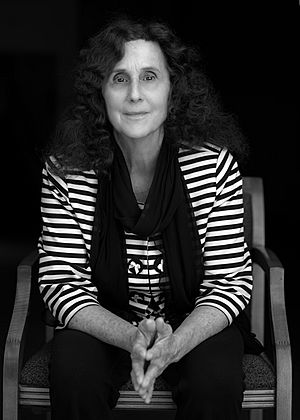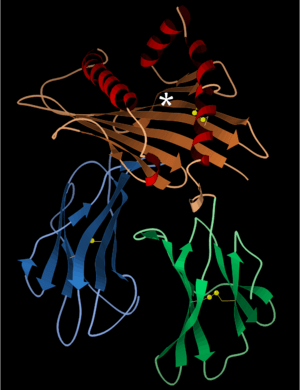Pamela Bjorkman facts for kids
Quick facts for kids
Pamela J. Björkman
|
|
|---|---|
 |
|
| Born |
Pamela Jane Bjorkman
1956 |
| Alma mater | University of Oregon (B.A., 1978) Harvard University (Ph.D, 1984) |
| Spouse(s) | Kai Zinn |
| Children | 2 |
| Scientific career | |
| Fields | Biochemistry Biological Engineering Microbiology Immunology |
| Institutions | California Institute of Technology UCLA Howard Hughes Medical Institute |
| Academic advisors | Don Wiley |
Pamela J. Bjorkman (born 1956) is an American scientist who studies how our bodies fight off diseases. She is a professor at the famous California Institute of Technology (Caltech).
Her work focuses on understanding the shapes of tiny parts of our body called proteins. These proteins are a key part of our immune system. By learning about them, she hopes to help create better medicines and vaccines to fight viruses. Bjorkman is known as a pioneer in her field, which is called structural biology. This is the study of what molecules, like proteins, look like in 3D.
Contents
A Scientist's Journey
Early Life and Spark of Interest
Pamela Bjorkman was born in Portland, Oregon. She grew up in a neighborhood called Parkrose. Her interest in science started when she was in high school.
After high school, she went to the University of Oregon. There, she earned a degree in chemistry. Even as a student, she was already working in science labs. This hands-on experience helped her on her path to becoming a top researcher.
College and a Big Discovery
In 1978, Bjorkman went to Harvard University to earn her Ph.D. She joined the lab of a scientist named Don Craig Wiley. His team used a special technique called x-ray crystallography. This method lets scientists see the 3D shape of molecules.
While working in Wiley's lab, Bjorkman made a huge breakthrough. She was the first person to figure out the 3D structure of a very important protein called an MHC protein. These proteins sit on the outside of our cells. They act like tiny platforms, holding up pieces of germs for our immune system to see and attack. Her discovery was a major step in understanding how our bodies recognize and fight infections.
Solving Medical Mysteries
After Harvard, Bjorkman continued her research at Stanford University. There, she studied how the immune system's "search party" cells, called T-cells, recognize the germs held by MHC proteins.
In 1989, she became a professor at the California Institute of Technology (Caltech), where she runs her own lab. At Caltech, she met and married another scientist, Kai Zinn. They have two children.
How the Bjorkman Lab Fights Viruses
The Bjorkman Lab at Caltech studies how our immune system responds to viruses. Their goal is to help develop new vaccines and treatments. They focus on some of the world's toughest viruses, including HIV, influenza (the flu), and SARS-CoV-2, the virus that causes COVID-19.
During the COVID-19 pandemic, Bjorkman's team worked hard to study the structure of the virus's "spike protein." This is the part of the virus that it uses to get inside our cells. Understanding its shape is key to creating vaccines that can block it.
To see these tiny structures, her lab uses powerful tools like:
- X-ray crystallography: To create detailed 3D models of proteins.
- Cryo-electron microscopy: To flash-freeze molecules and take pictures of them with electrons.
- Fluorescent microscopy: To make parts of a cell glow, so scientists can watch what they do.
Her research has been published in top science journals like Nature and Science.
Awards and Recognition
For her groundbreaking work, Pamela Bjorkman has received many awards. These awards show how important her discoveries have been to the world of science.
- 1993: William B. Coley Award for cancer research
- 1994: Gairdner Foundation International Award, a top Canadian prize for medical research
- 1996: Paul Ehrlich and Ludwig Darmstaedter Prize, a German award for medicine
- 2001: Elected to the National Academy of Sciences, a high honor for American scientists
- 2006: L'Oreal-UNESCO Award for Women in Science
- 2021: Greengard Prize, which honors outstanding women scientists
- 2025: Wolf Prize in Medicine, a prestigious international award
See also
 In Spanish: Pamela J. Bjorkman para niños
In Spanish: Pamela J. Bjorkman para niños


